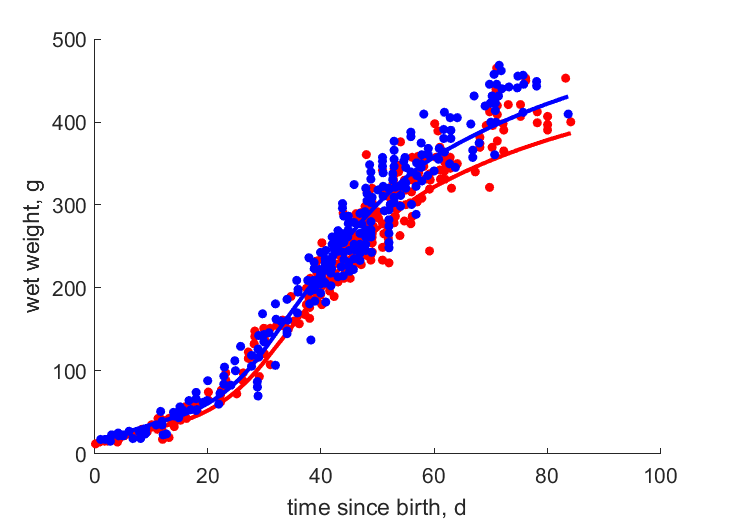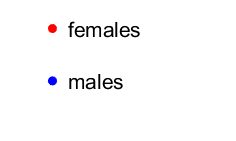Predictions & Data for this entry
| Model: std | climate: Dsa, Dfb, Dfc | migrate: | phylum: |
| COMPLETE = 2.5 | ecozone: THn | food: bxCi, biHs | class: |
| MRE = 0.041 | habitat: 0iTf | gender: Dg | order: |
| SMSE = 0.004 | embryo: Tnsf | reprod: O | family: |
Zero-variate data
| Data | Observed | Predicted | (RE) | Unit | Description | Reference |
|---|---|---|---|---|---|---|
| ab | 20 | 19.36 | (0.03221) | d | age at birth | avibase |
| tx | 10 | 10 | (1.903e-05) | d | time since birth at fledging | avibase |
| tp | 80 | 80.07 | (0.0009188) | d | time since birth at puberty | guess |
| tR | 365 | 365 | ( 0) | d | time since birth at first reproduction | avibase |
| am | 4745 | 4745 | (7.73e-05) | d | life span | AnAge |
| Ww0 | 22.65 | 21.52 | (0.0497) | g | intitial wet weight | avibase |
| Wwb | 15 | 16.59 | (0.1059) | g | wet weight at birth | AnAge |
| Wwi | 448.7 | 458.8 | (0.02258) | g | ultimate wet weight | avibase |
| Wwim | 492 | 518.5 | (0.05391) | g | ultimate wet weight for males | avibase |
| Ri | 0.0137 | 0.0137 | (0.0004171) | #/d | maximum reprod rate | avibase |
Uni- and bivariate data
| Data | Figure | Independent variable | Dependent variable | (RE) | Reference |
|---|---|---|---|---|---|
| tW_f |   | time since birth | wet weight | (0.09352) | SchrBlom2021 |
| tW_m |   | time since birth | wet weight | (0.08555) | SchrBlom2021 |
Pseudo-data at Tref = 20°C
| Data | Generalised animal | Falcipennis canadensis | Unit | Description |
|---|---|---|---|---|
| v | 0.02 | 0.02925 | cm/d | energy conductance |
| p_M | 18 | 1795 | J/d.cm^3 | vol-spec som maint |
| k_J | 0.002 | 0.07373 | 1/d | maturity maint rate coefficient |
| k | 0.3 | 0.3007 | - | maintenance ratio |
| kap | 0.8 | 0.962 | - | allocation fraction to soma |
| kap_G | 0.8 | 0.8003 | - | growth efficiency |
| kap_R | 0.95 | 0.95 | - | reproduction efficiency |
Discussion
- Males are assumed to differ from females by {p_Am} only
- mod_1: males have equal state variables at b, compared to females
- mod_3: Pseudo-data point k is used, rather than k_J; Parameter t_R is added, replacing clutch interval t_N. Postnatal T is based on PrinPres1991, see get_T_Aves. See further the revision page, theme puberty
Bibliography